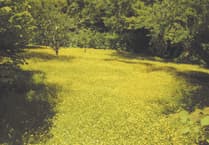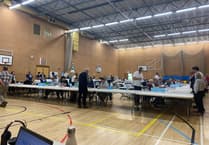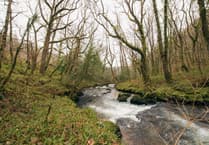HISTORIC England are looking for witches’ marks and there may be some in the South Hams.
Witches marks, or apotropaic marks, are carved into stone or woodwork near a building’s entrance points, particularly doorways, windows and fireplaces, to protect inhabitants and visitors from witches and evil spirits.
They can be found carved into the fabric of medieval churches, houses, barns, caves and even the Tower of London, but they have never been fully recorded. With the South Hams being rich is historic buildings and history, there are likely a few around here.
Duncan Wilson, chief executive of Historic England said: ‘Witches’ marks are a physical reminder of how our ancestors saw the world. They really fire the imagination and can teach us about previously-held beliefs and common rituals. Ritual marks were cut, scratched or carved into our ancestors’ homes and churches in the hope of making the world a safer, less hostile place.
‘They were such a common part of everyday life that they were unremarkable and because they are easy to overlook, the recorded evidence we hold about where they appear and what form they take is thin. We now need the public’s help to create a fuller record of them and better understand them.’
According to Historic England, the most common was the daisy wheel, or hexafoil, which is a six petal ‘flower’ drawn with a pair of compasses. As they are made of a single, continuous line, they were supposed to confuse and entrap evil spirits.
Pentangles, or five-pointed stars, were also often used as ritual symbols, as well as the initials AM for Ave Maria, M for Mary of VV for Virgin of Virgins are also common types of atrophic marks.
They can be found in buildings dating from around 1550 to 1750, the photograph shows one spotted in the medieval Bradford-On-Avon Tithe Barn, where they were etched to protect crops.
If you live in an old building, or visit one, keep a look out for these marks. You can send photos to us on [email protected] or via out Facebook pages. Let Historic England know about them via their website: historicengland.org.uk, to help build up the picture of the history of witchcraft beliefs.





Comments
This article has no comments yet. Be the first to leave a comment.